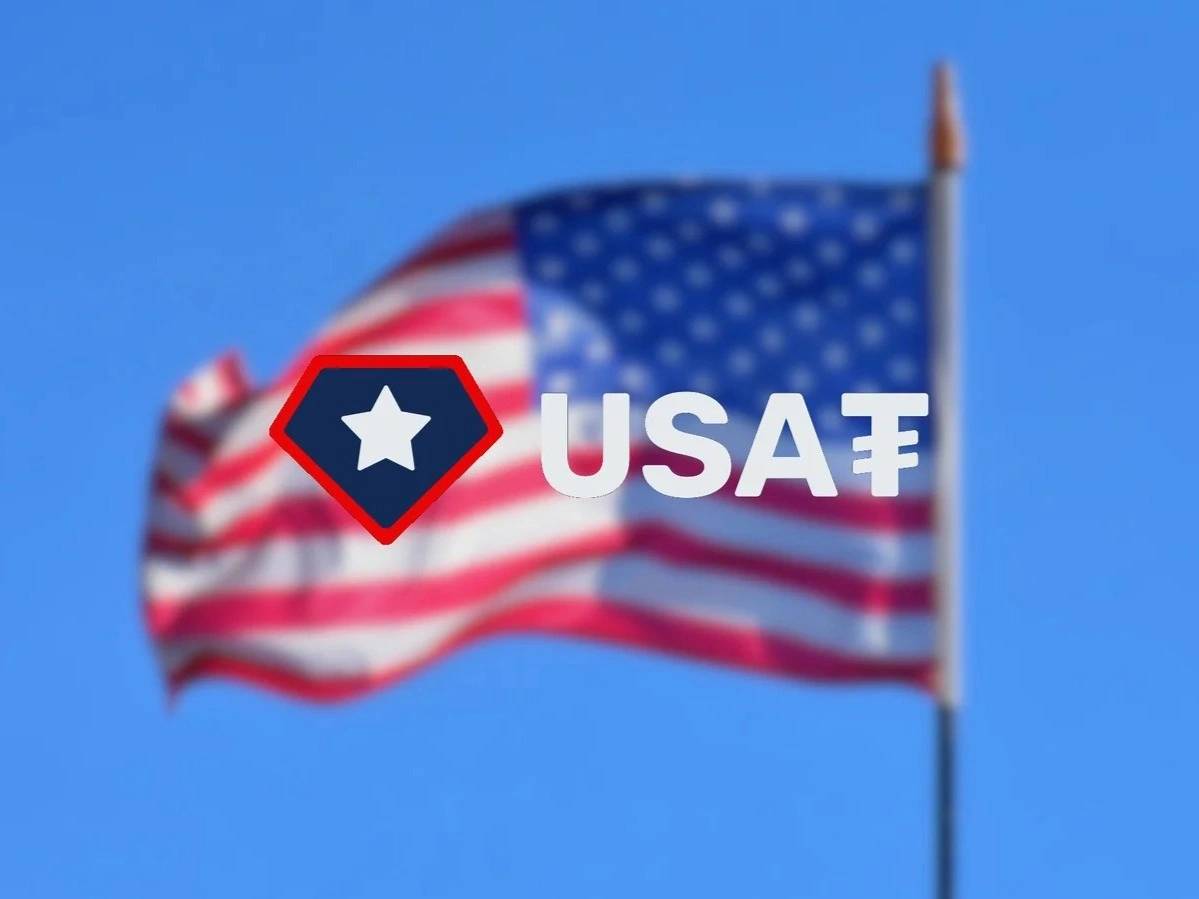위키 구독하기
Share wiki
Bookmark
USAT
USAT
USAT는 테더가 2025년 9월 12일에 발표한 미국 달러 페그 스테이블코인입니다. 이는 미국 내에서 운영되는 기업 및 기관을 위해 특별히 설계되었으며, 미국의 금융 규정을 준수하기 위한 프레임워크를 갖추고 있습니다.
개요
USAT는 세계 최대 스테이블코인인 USDT를 발행하는 테더가 미국 시장에서 규제 준수를 확보하기 위한 전략적 계획입니다. 2025년 9월에 발표된 이 스테이블코인은 전 세계적으로 주목받는 USDT의 미국 중심 대안으로 자리매김하며, 미국 기업 및 기관 고객이 요구하는 규정 준수 표준을 충족하도록 설계되었습니다. 이 프로젝트는 2025년 중반에 통과된 미국 법률인 GENIUS 법에 따라 설립된 법적 프레임워크 내에서 운영되도록 개발되었습니다. 이 법은 스테이블코인 발행자를 위한 연방 규칙을 만들기 위한 것입니다. 이러한 움직임은 테더가 기존 제품에 대한 규제 당국의 투명성 및 감독에 대한 질문에 대응하고, 미국 법 집행 기관 및 정부의 파트너로서 재브랜딩하려는 노력으로 여겨집니다. [1] [2]
USAT의 출시는 테더를 Circle (USDC 발행사), Paxos (USDP), 그리고 최근 자체 스테이블코인을 출시한 Ripple과 같은 기존 미국 기반 스테이블코인 발행사와 직접 경쟁하게 합니다. 이 계획은 스테이블코인 부문의 괄목할 만한 성장세 속에서 발표되었는데, 2025년 9월까지 총 시가총액은 약 2,700억 달러에서 2,870억 달러에 달했습니다. 당시 테더의 주요 스테이블코인인 USDT는 1,690억 달러의 시가총액을 기록했지만, 전체 시장 점유율은 58%로 2년 만에 최저치를 기록했습니다. 따라서 USAT는 완전히 규제되고 투명하며 미국 중심의 제품을 제공함으로써 시장 리더십을 강화하려는 테더 전략의 핵심 요소입니다. [3] [4]
미국 운영을 원활하게 하기 위해 테더는 노스캐롤라이나주 샬럿에 본사를 둔 새로운 미국 부서인 Tether U.S.를 설립했습니다. 이 프로젝트에는 발행 및 준비금 관리를 위해 연방 규제를 받는 미국 금융 기관과의 주요 파트너십이 포함되어 운영 투명성과 규정 준수에 대한 약속을 보여줍니다. 이 스테이블코인은 미국 달러로 완전히 뒷받침되며, Cantor Fitzgerald가 준비금을 관리하고 Anchorage Digital이 발행을 담당합니다. [1] [2]
역사
테더의 원래 스테이블코인인 USDT는 2014년에 글로벌 시장을 위해 만들어졌지만, 미국 특화 제품에 대한 개념은 훨씬 나중에 등장했습니다. 2025년 5월, 테더 CEO인 Paolo Ardoino는 인터뷰에서 미국 중심의 새로운 스테이블코인 계획을 처음 언급하며, 미국 규제 환경에 더 직접적으로 참여하려는 회사의 의도를 시사했습니다. [2]
2025년 7월 중순, 미국 의회가 스테이블코인 중심의 GENIUS 법을 통과시킨 것은 중요한 입법적 발전이었습니다. 이 법안은 스테이블코인 발행자를 위한 명확한 규제 경로를 제공하여 USAT와 같은 프로젝트가 연방 감독 하에 운영될 수 있는 법적 기반을 마련했습니다. [4]
2025년 9월 12일, 테더는 뉴욕시에서 행사를 열고 USAT를 공식적으로 공개했습니다. 발표에서 Paolo Ardoino는 프로젝트의 구조, 목적 및 주요 파트너십에 대해 자세히 설명했습니다. 또한 회사는 스테이블코인을 감독할 새로운 미국 부서의 CEO로 Bo Hines를 소개했습니다. USAT 토큰의 예정된 공개 데뷔는 2025년 말로 예정되어 있습니다. [1] [3]
기술 및 인프라
USAT의 운영 프레임워크는 테더의 독점 기술과 규제를 받는 미국 금융 기관과의 파트너십을 결합하여 구축되었습니다.
토큰화 플랫폼
USAT는 회사의 독점 토큰화 플랫폼인 "Hadron by Tether"를 기반으로 구축되었습니다. Hadron은 실물 자산(RWA)의 토큰화를 위해 설계된 플랫폼으로 설명되며, USAT 스테이블코인의 생성 및 관리를 위한 기반 기술을 제공합니다. [3] [4]
발행 메커니즘
처음부터 미국 규정을 준수하기 위해 USAT의 발행은 Anchorage Digital이 담당합니다. 미국 최초의 연방 공인 암호화폐 은행인 Anchorage Digital의 참여는 스테이블코인의 규제 전략에서 중요한 부분이며, 토큰의 발행 및 배포를 위한 규정 준수 경로를 제공합니다. [2] [1]
준비금 관리
USAT를 뒷받침하는 준비금은 금융 서비스 회사인 Cantor Fitzgerald가 관리합니다. 이 회사는 미국 달러 준비금의 수탁자이자 스테이블코인의 선호하는 주요 딜러 역할을 합니다. 이러한 방식은 자산의 투명성과 안정성을 제공하여 각 USAT 토큰이 해당하는 미국 달러 보유량으로 완전히 뒷받침되도록 설계되었습니다. [3] [2]
규제 프레임워크
USAT는 GENIUS 법을 중심으로 미국 법을 준수하도록 명시적으로 설계되었습니다. 2025년 중반에 미국 의회에서 통과된 GENIUS 법은 스테이블코인 발행 및 관리를 위한 포괄적인 연방 규제 프레임워크를 구축합니다. 이 법안에 따라 테더는 USAT를 미국 금융 기관의 주류 채택에 적합한 완전히 규제되고 준수하는 디지털 달러로 자리매김하려고 합니다. 규제에 대한 이러한 적극적인 접근 방식은 역사적으로 테더의 글로벌 USDT 운영을 둘러싼 규제 모호성과는 크게 다르며, 미국 시장 내에서 신뢰와 정당성을 구축하려는 회사 전략의 중심 요소입니다. [4] [3]
기업 구조 및 리더십
USAT 및 미국 운영을 관리하기 위해 테더는 새로운 전담 사업 부서를 설립했습니다.
Tether U.S. 부서
Tether U.S.라는 새로운 법인은 USAT 스테이블코인의 모든 측면을 감독합니다. 이 부서는 금융 기술 회사의 중심지로 성장하고 있는 노스캐롤라이나주 샬럿에 본사를 설립했습니다. 이 미국 기반 법인은 미국 규제 기관, 파트너 및 기관 고객과 직접 소통하도록 구축되었습니다. [2] [1]
주요 인물
USAT 발표는 모회사인 테더의 최고 경영자인 Paolo Ardoino가 주도했습니다. Ardoino는 이 출시를 디지털 경제에서 미국 달러의 주도적인 위치를 확보하기 위한 약속으로 규정했습니다.
Bo Hines는 새로운 부서와 USAT 프로젝트를 이끌기 위해 Tether U.S.의 최고 경영자로 임명되었습니다. Hines는 디지털 자산과 관련된 법률 및 공공 정책 분야의 경력을 가지고 있습니다. 그는 이전에 백악관의 암호화폐 자문 그룹인 "대통령 디지털 자산 자문위원회"의 이사를 역임했으며, 도널드 트럼프 대통령의 암호화폐 정책 자문관이었습니다. 임명 전 Hines는 테더의 미국 전략 자문관으로 활동했으며, 미국에서 규제 참여를 위한 회사의 노력에 그의 리더십이 필수적이었습니다. [2] [1]
파트너십
USAT의 구조는 확립되고 규제를 받는 미국 금융 회사와의 전략적 파트너십에 의존합니다. 이러한 협업은 프로젝트의 규정 준수 및 운영 무결성에 필수적입니다.
- Anchorage Digital: USAT 토큰의 공식 발행사로서, 연방 공인 암호화폐 은행은 스테이블코인의 규정 준수 발행을 담당합니다.
- Cantor Fitzgerald: 이 금융 서비스 회사는 USAT를 뒷받침하는 미국 달러 준비금을 관리하며, 수탁자이자 주요 딜러 역할을 합니다.
이러한 파트너십의 핵심은 파트너의 재정적 통합을 프로젝트의 성공에 연결하는 것입니다. Anchorage Digital과 Cantor Fitzgerald 모두 테더의 새로운 미국 법인의 주주입니다. 이러한 방식에 따라, 그들은 USAT의 준비금 자산 관리에서 발생하는 수익을 공유하여 스테이블코인의 성장과 안정성에 대한 이해관계를 갖게 됩니다. [1]
인용구
"USAT는 달러가 디지털 시대에 주도적인 위치를 유지할 뿐만 아니라, 그 어느 때보다 투명하고, 탄력적이며, 접근 가능하고, 막을 수 없는 제품을 통해 번영할 수 있도록 하는 우리의 약속입니다." — Paolo Ardoino, 테더 CEO [3]
"준수, 투명성 및 혁신을 중심으로 USAT를 구축함으로써, 우리는 달러가 디지털 자산 공간에서 신뢰의 기반으로 남아 있도록 보장합니다." — Bo Hines, Tether U.S. CEO [1]
"우리는 미국을 세계에서 가장 주도적인 준비금 통화로 유지할 것이며, 스테이블코인을 사용하여 그렇게 할 것입니다." — 스테이블코인에 대한 미국의 광범위한 전략과 관련하여 인용된 Scott Bessent 미국 재무장관 [2]
잘못된 내용이 있나요?
